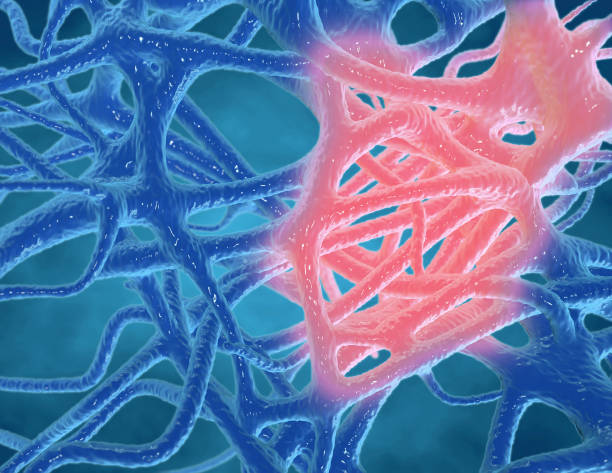Health Conditions
Does Inflammation Help Healing
Inflammation is the immune system’s natural response to injury, infection, or foreign chemicals. It is a complicated process that involves the activation of different immune cells as well as the production of inflammatory mediators including cytokines and chemokines. While inflammation is commonly linked with pain, swelling, and redness, it is an important element of the healing process.
In its most basic form, inflammation is a defensive response that aids in the isolation and elimination of dangerous chemicals in the body. When tissues are damaged, immune cells are called in to clear away waste and prevent infection. Inflammation also aids in the delivery of nutrients and oxygen to the site of injury, which aids in tissue repair and regeneration. In this sense, inflammation is a crucial aspect of the healing process; without it, wounds cannot heal correctly.
Inflammation, on the other hand, is a two-edged sword. While inflammation is required for healing, severe or chronic inflammation can actually impede healing. Chronic inflammation, for example, has been related to a variety of health issues such as heart disease, cancer, and autoimmune disorders. To support maximum health, it is critical to create a balance between inflammation and healing, as well as to ensure that the immune system is operating effectively.

The Role of Inflammation in Healing
Inflammation is the body’s natural response to damage or infection. It is a complicated process involving numerous cells, substances, and signaling networks. While inflammation has a negative image, it is also an important aspect of the healing process.
Acute vs Chronic Inflammation
Inflammation is classified into two types: acute and chronic. Acute inflammation is a quick reaction to an injury or infection. Its symptoms include redness, swelling, heat, and pain. This form of inflammation is necessary for healing because it aids in the transport of white blood cells and other immune cells to the site of injury. Acute inflammation also increases blood flow to the area, which is necessary for providing nutrients and oxygen to damaged tissue.
In contrast, chronic inflammation is a long-term response to injury or illness. It can linger for months or even years and is frequently related with arthritis, diabetes, and heart problems. Chronic inflammation can harm good tissue and delay repair.
Inflammation Response Mechanism
The inflammatory response mechanism is a complicated interplay of cells and molecules. When tissue is injured, the body produces molecules known as cytokines. These cytokines cause white blood cells to flock to the site of injury. The white blood cells then produce more substances that aid in the removal of damaged tissue and the fight against infection.
In addition to cytokines, the body produces prostaglandins, which serve to increase blood flow and generate inflammation-related symptoms such as redness, swelling, and discomfort.
Benefits of Inflammatory Process
While inflammation can be unpleasant and even painful, it is necessary for healing. The inflammatory process aids in the removal of damaged tissue, the battle against infection, and the creation of new tissue. It also aids in increasing blood flow to the area, which is necessary for providing nutrients and oxygen to damaged tissue.
To summarize, inflammation is an important aspect of the healing process. Acute inflammation is a short-term reaction to injury or infection that aids in the recruitment of white blood cells and other immune cells to the site of harm. Chronic inflammation is a long-term reaction to injury or infection that can harm good tissue and slow healing. The inflammatory response mechanism comprises a complicated interplay of many cells and substances, and the benefits of the inflammatory process include the removal of damaged tissue, the battle against infection, and the promotion of new tissue growth.

Inflammation and Diseases
Inflammation is the body’s natural response to damage or infection. It is a procedure that assists the body in healing itself. Chronic inflammation, on the other hand, can lead to a variety of disorders. In this section, we will look at the connection between inflammation and disease.
Inflammation and Arthritis
Arthritis is a condition that causes joint inflammation. Inflammation in the affected joints can cause pain, stiffness, and edema. Rheumatoid arthritis is an autoimmune condition that causes chronic joint inflammation. The immune system targets the joints, producing inflammation and cartilage and bone loss. This can result in joint deformation and impairment.
Inflammation-Related Conditions
Chronic inflammation can also have a role in the development of other diseases such as heart disease, cancer, diabetes, and inflammatory bowel disease. Inflammatory bowel disease (IBD) refers to a range of conditions that cause chronic inflammation in the digestive tract. This might result in stomach pain, diarrhea, and other symptoms.
Heart Disease and Inflammation
Inflammation is a major factor in the development of heart disease. Chronic inflammation can damage blood vessels, resulting in plaque formation. This can cause blood arteries to constrict, limiting blood flow to the heart. This can eventually lead to a heart attack or stroke.
To summarize, inflammation is the body’s natural response to injury or infection. It is a procedure that assists the body in healing itself. Chronic inflammation, on the other hand, can lead to a variety of disorders. Chronic inflammation can cause a variety of disorders, including arthritis, heart disease, cancer, diabetes, and inflammatory bowel disease. Chronic inflammation must be managed in order to prevent these disorders.

Managing Inflammation for Better Healing
Inflammation can be both beneficial and detrimental to healing. While acute inflammation is a natural response that aids in healing, chronic inflammation can actually hamper healing. As a result, controlling inflammation is critical for better healing outcomes. Here are some methods for dealing with inflammation:
Diet and Inflammatory Foods
Diet has an important part in inflammation management. Anti-inflammatory foods can help reduce inflammation and promote healing in our diet. Foods like fatty fish, leafy greens, almonds, and whole grains fall under this category. On the other side, ingesting inflammatory foods such as processed meals, sweets, and alcohol can aggravate inflammation and slow down the healing process. As a result, it is critical to avoid such items and instead opt for a well-balanced, anti-inflammatory diet.
Lifestyle Modifications
Lifestyle changes can also aid in the management of inflammation and the promotion of healing. For example, regular exercise has been demonstrated to lower inflammation and enhance healing outcomes. Maintaining a healthy weight is also important, as being overweight can cause chronic inflammation and hinder the healing process. Meditation and deep breathing are two stress management practices that can help reduce inflammation and improve healing.
Medical Interventions
Medical measures may be required in some circumstances to manage inflammation and improve recovery. Nonsteroidal anti-inflammatory medicines (NSAIDs) like ibuprofen and naproxen can aid with inflammation and pain relief. In some cases, corticosteroids may be administered to treat inflammation. However, because these medications might have negative effects and interact with other medications, it is critical to use them under the supervision of a healthcare practitioner.
Finally, controlling inflammation is critical for better healing outcomes. We may help lower inflammation and promote healing by integrating anti-inflammatory items into our diet, making lifestyle changes, and seeking medical intervention when necessary.
Conclusion
Exploring the intricate relationship between inflammation and healing has provided insights into the body’s remarkable restorative mechanisms. It’s fascinating to recognize that inflammation, often viewed negatively, plays a dual role as both a protector and a healer.
In my own reflections, this journey sparks a contemplation on the body’s wisdom, a reminder that sometimes discomfort, like inflammation, is a messenger guiding us toward recovery. It underscores the nuanced dance between the immune system’s response and the restoration of health.
Embracing this understanding encourages a more patient perspective toward the body’s innate healing processes. It prompts a shift from perceiving inflammation solely as an adversary to recognizing it as a crucial ally in the intricate tapestry of our well-being.


